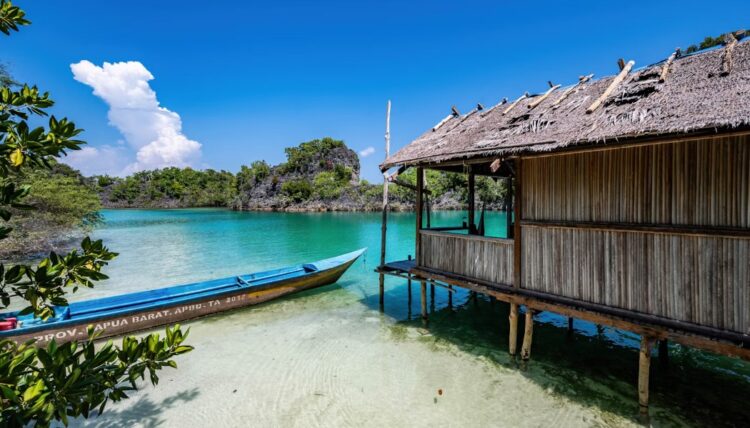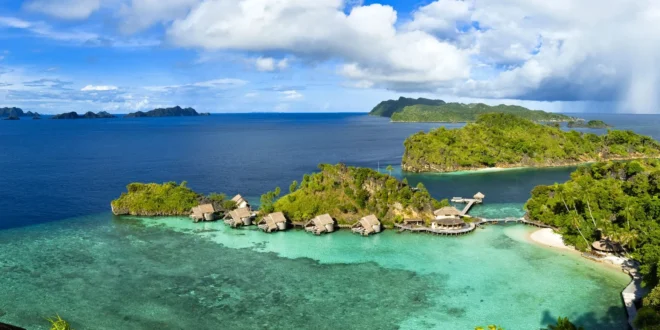Indonesia is blessed with thousands of islands, but Raja Ampat stands in a league of its own. Located off the northwestern tip of Papua, this cluster of more than 1,500 small islands, cays, and shoals is often described as the world’s ultimate marine paradise.
What sets it apart isn’t just the postcard beauty of limestone karsts rising from turquoise water, but the staggering biodiversity beneath the surface.
Divers, nature lovers, and curious travelers find here an untouched Eden that feels far removed from the rush of the modern world.
The Best Way to Experience the Islands
The remoteness of Raja Ampat is both its challenge and its charm. Reaching the islands involves flying into Sorong, West Papua, then transferring by ferry or private boat. While you can base yourself on one of the homestays or eco-resorts, the most immersive way to explore is by water.
Opting for a Raja Ampat yacht charter allows you to move between the archipelago’s highlights without being tied to a single base. With a yacht, you can wake up beside a pristine reef one morning, explore hidden lagoons the next, and anchor at deserted beaches few travelers ever see. It’s also the most comfortable option for those who want a mix of adventure and relaxation.
Diving and Snorkeling ─ The Heart of the Journey
For many visitors, diving is the centerpiece of their trip. Raja Ampat’s dive sites vary from gentle coral gardens perfect for beginners to adrenaline-pumping drift dives where pelagic species patrol. Cape Kri, Blue Magic, and Manta Sandy are just a few names etched in diver folklore.
Even if you don’t dive, snorkeling is equally rewarding. The reefs rise close to the surface, so you can glide over fields of hard and soft corals teeming with life. Watching manta rays sweep past as you float above them is an unforgettable moment that doesn’t require a tank or certification.
Beyond the Sea ─ Land and Culture
While the underwater world often gets the spotlight, Raja Ampat’s land-based experiences deserve attention too. Hikes to viewpoints like Wayag or Piaynemo reward you with vistas of emerald islets scattered across a glassy sea. Birdwatchers can seek out the elusive red bird-of-paradise in the forests of Waigeo.
Meeting local Papuan communities adds a cultural dimension. Many villages have embraced community-based tourism, offering homestays, handicrafts, and guided treks. Sharing a meal of freshly caught fish with islanders provides a reminder that Raja Ampat is not just a natural paradise but also a living home.

Sustainable Travel Matters Here
Raja Ampat’s ecosystem is fragile. Tourism, if not managed carefully, risks undoing decades of conservation progress. Visitors are encouraged to follow eco-friendly practices such as:
- Using reef-safe sunscreen to avoid harming corals.
- Supporting local homestays and community projects.
- Limiting plastic waste by carrying reusable bottles and bags.
- Respecting wildlife by keeping a safe distance when diving or snorkeling.
These small choices add up to ensure that Raja Ampat remains as pristine for future travelers as it feels today.
Final Thoughts ─ Why Raja Ampat Stays With You
Traveling through Raja Ampat feels like stepping into a living painting. The colors – emerald jungles, turquoise seas, fiery sunsets – linger long after you leave. The memories of drifting alongside manta rays, climbing jagged peaks for sweeping views, or sharing laughter with locals around a meal stay etched in the heart.
This is more than just a destination for divers. It’s a reminder of what the planet looks like when nature is allowed to thrive and people work together to protect it. Visiting Raja Ampat is not just about seeing something spectacular, but about experiencing a place that humbles and inspires in equal measure.
 Hi Boox Popular Magazine 2025
Hi Boox Popular Magazine 2025



